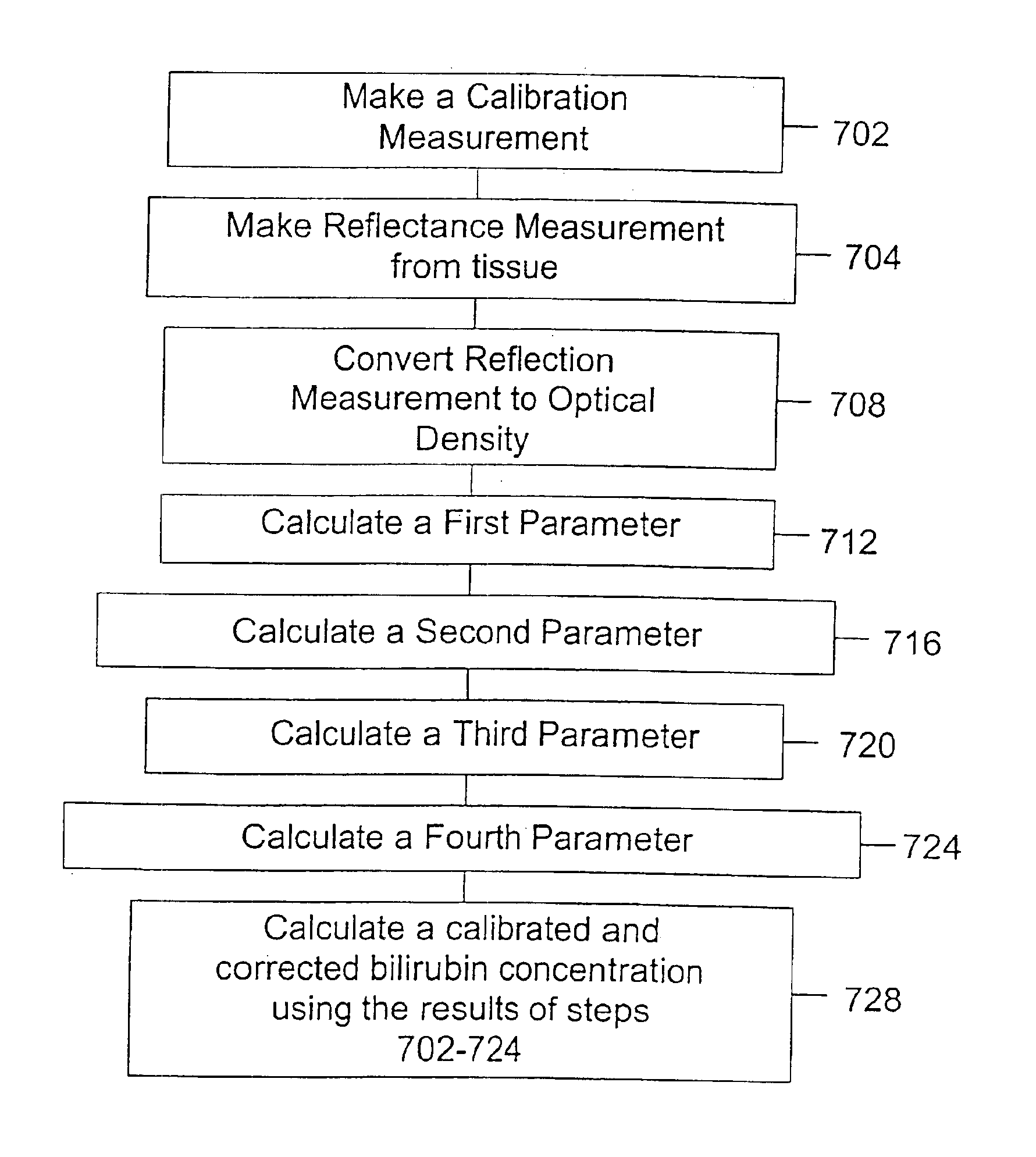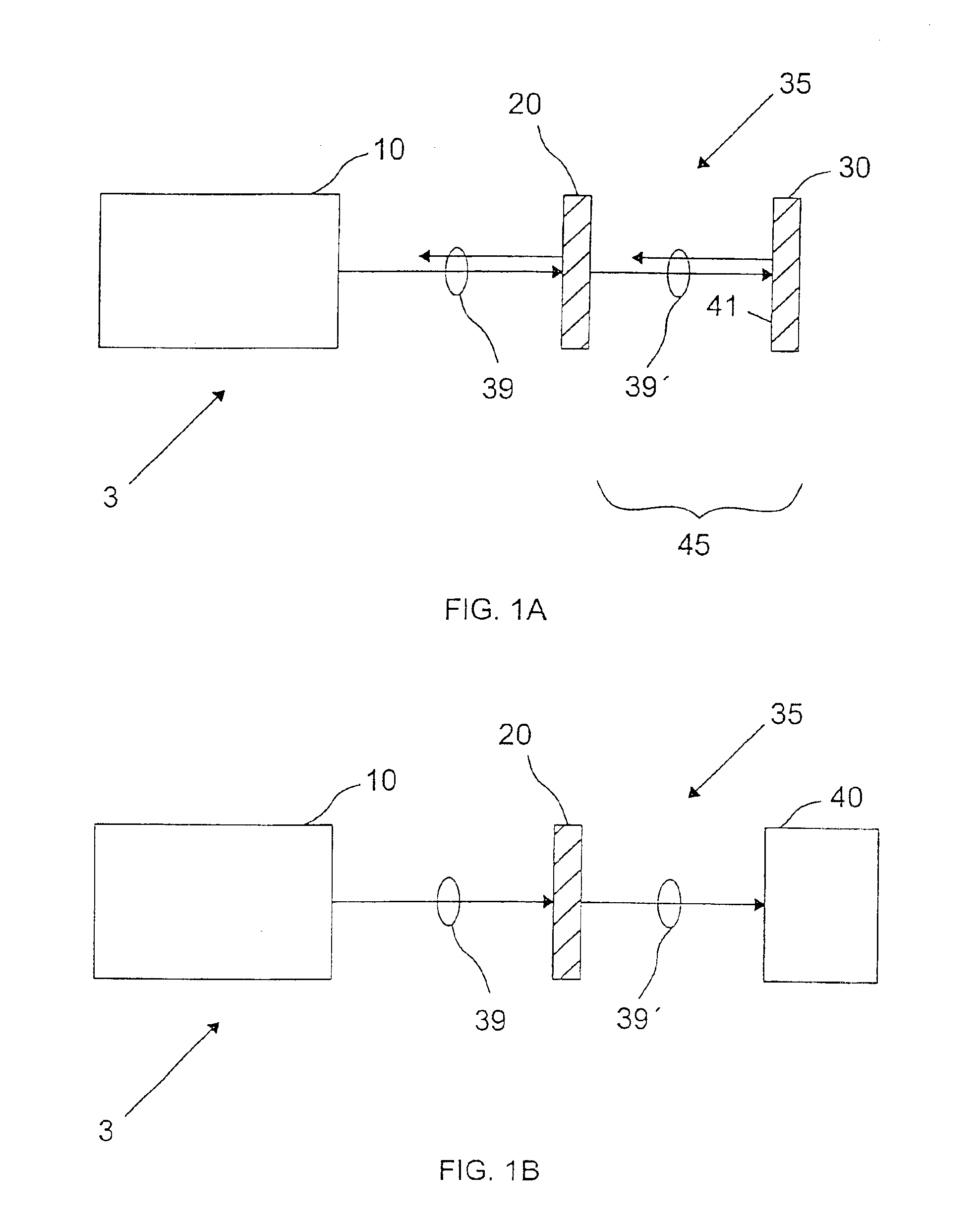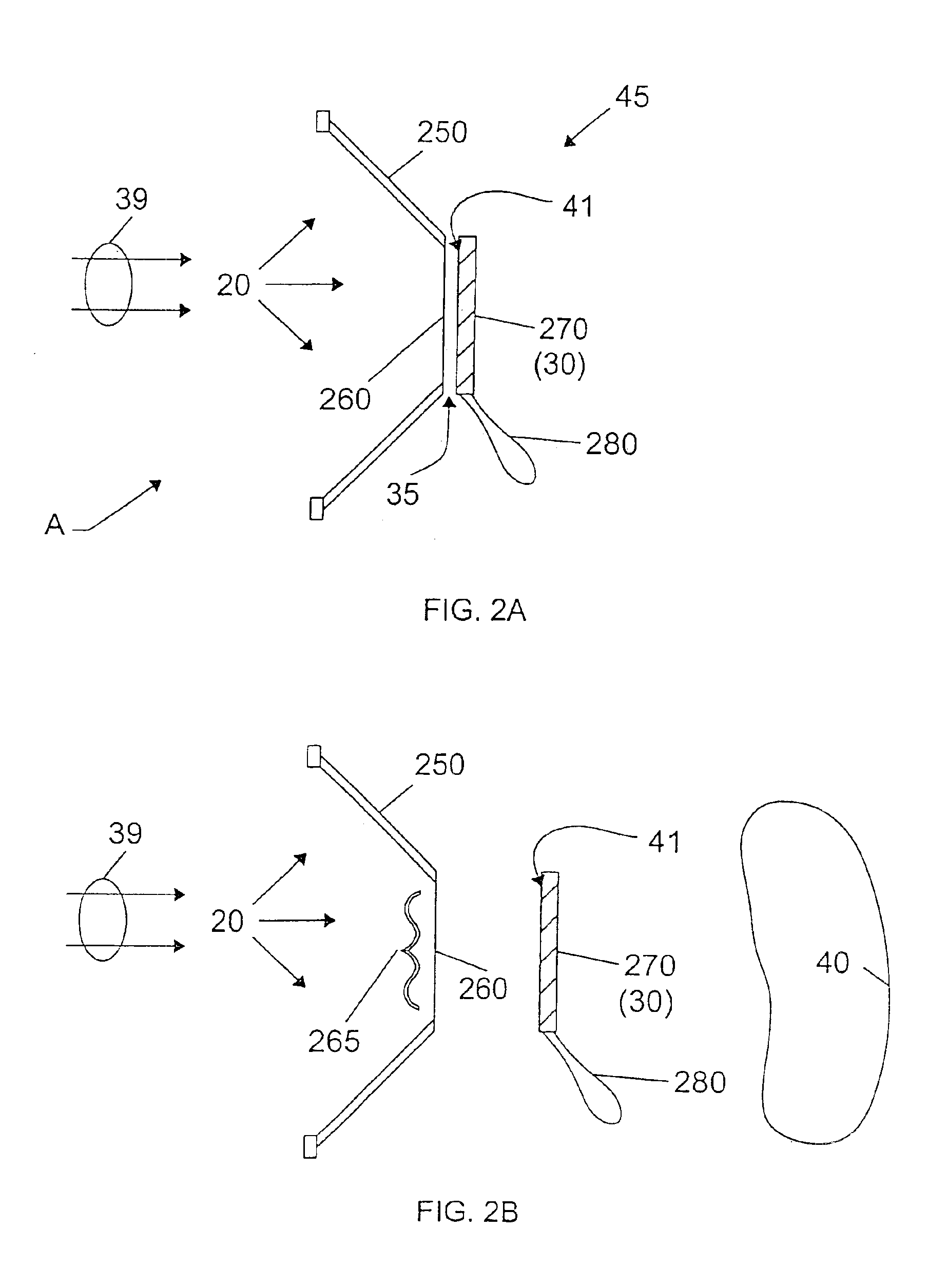Method and system for determining bilirubin concentration
a bilirubin concentration and bilirubin technology, applied in the field of instruments, can solve the problems of calibration errors, calibration devices designed to be reused, and no simultaneous solution to both calibration problems and problems, and achieve the effect of simple and accura
- Summary
- Abstract
- Description
- Claims
- Application Information
AI Technical Summary
Benefits of technology
Problems solved by technology
Method used
Image
Examples
Embodiment Construction
[0073]A spectrometer system that uses a disposable calibration device for calibration will be described with reference to FIGS. 1A and 1B.
[0074]FIG. 1A is a schematic view of a measurement system 3 in a calibration mode. The system 3 includes an instrument 10 which outputs electromagnetic radiation 39 and receives and analyzes radiation reflected back towards the device by a material or tissue being measured. Alternatively, the instrument 10 may output, receive and analyze acoustic waves. Reference number 39 will be used to represent electromagnetic radiation or acoustic waves just as reference number 10 will be used to represent an instrument that outputs either electromagnetic radiation or acoustic waves. If the instrument 10 outputs electromagnetic radiation 39, that radiation can lie within the visible, infrared, ultra-violet regimes, and / or within the rf, microwave and millimeter wave regimes. With regard to electromagnetic radiation 39, the instrument 10 can be a spectrometer,...
PUM
 Login to View More
Login to View More Abstract
Description
Claims
Application Information
 Login to View More
Login to View More - R&D
- Intellectual Property
- Life Sciences
- Materials
- Tech Scout
- Unparalleled Data Quality
- Higher Quality Content
- 60% Fewer Hallucinations
Browse by: Latest US Patents, China's latest patents, Technical Efficacy Thesaurus, Application Domain, Technology Topic, Popular Technical Reports.
© 2025 PatSnap. All rights reserved.Legal|Privacy policy|Modern Slavery Act Transparency Statement|Sitemap|About US| Contact US: help@patsnap.com



